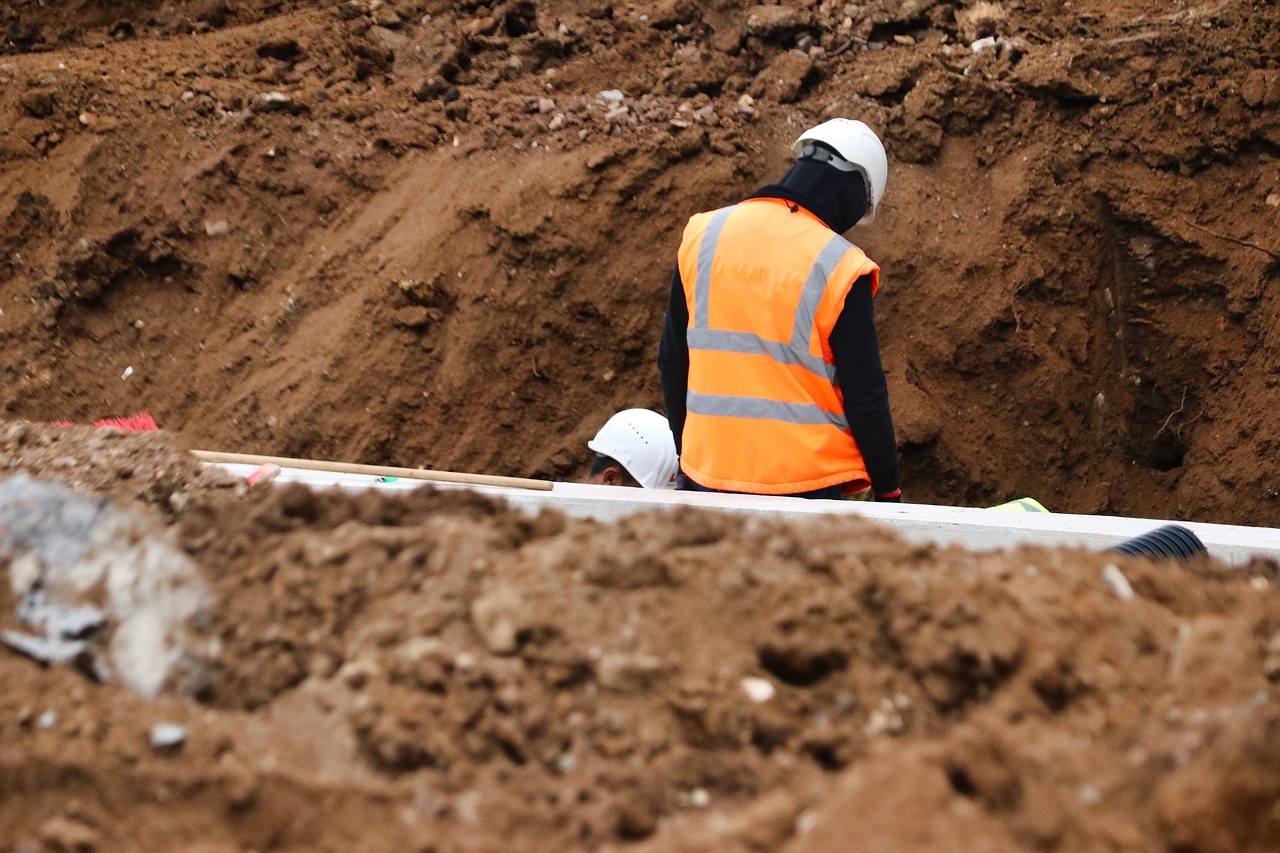Safety Measures: The Subtle Power of Human Behavior
When we think about safety measures, we often envision hard hats, safety nets, and warning signs. But what if I told you that the real power behind effective safety lies in understanding human behavior? Yes, the way we think, feel, and react can significantly influence how well safety protocols are followed. Imagine a world where safety is not just a set of rules, but a culture embedded in our daily actions and decisions. This article explores the intricate relationship between human behavior and safety measures, revealing how psychological insights can enhance safety protocols across various environments.
Understanding how individuals perceive risk is crucial for implementing effective safety measures. Our perception of risk is often clouded by cognitive biases that shape our views on safety. For instance, some people might underestimate the dangers of working at heights because they haven’t experienced a fall, while others may overestimate the risks associated with driving in the rain due to a past accident. These biases can lead to a disconnect between actual risks and how we respond to them. By recognizing these biases, safety professionals can tailor their strategies to address these misconceptions, making safety protocols more relatable and effective.
Behavioral safety techniques focus on promoting safe behaviors in the workplace. It’s not just about having safety gear; it’s about instilling a mindset that prioritizes safety at every level. This section discusses strategies that encourage positive behavior and reduce accidents through observation and feedback. The idea is simple: when individuals are aware of their actions and the consequences, they are more likely to make safer choices. This approach transforms safety from a mere obligation into a shared responsibility among all employees.
One of the most effective tools in shaping behavior is positive reinforcement. This method involves rewarding individuals for adhering to safety protocols, thereby motivating them to continue these behaviors. For example, a company might implement a monthly recognition program for teams that demonstrate exceptional safety practices. This not only boosts morale but also fosters a culture where safety is celebrated. By highlighting safe behaviors, organizations can create an environment where employees feel valued for their commitment to safety.
Developing a structured reward system can enhance participation in safety programs. Think of it as a game where everyone has a chance to win, but the prize is workplace safety. To design effective incentives, consider the following elements:
- Clear Criteria: Define what behaviors will be rewarded.
- Variety of Rewards: Offer different types of rewards, such as gift cards, extra time off, or public recognition.
- Consistency: Ensure that rewards are given consistently to maintain motivation.
By implementing such a system, organizations can encourage employees to actively participate in safety initiatives, ultimately leading to a safer workplace.
Implementing feedback mechanisms helps individuals understand their safety performance. Constructive feedback plays a vital role in fostering a culture of safety. For instance, regular safety meetings can provide a platform for discussing safety practices and addressing any concerns. This open communication not only helps identify areas for improvement but also reinforces the importance of safety in everyday operations. When employees feel heard and valued, they are more likely to engage in safe behaviors.
Training and education are essential components of safety measures. Continuous learning ensures that individuals are aware of safety protocols and practices. Think of safety training as a refresher course that keeps everyone updated on the latest standards and practices. Regular workshops, online courses, and hands-on training sessions can significantly enhance employees' knowledge and confidence in handling safety-related issues. The more informed employees are, the better equipped they will be to create a safer work environment.
The environment plays a significant role in shaping human behavior regarding safety. Our physical surroundings can either promote or hinder safe practices. For example, cluttered workspaces can lead to accidents, while well-organized areas can enhance focus and reduce risks. This section explores how physical spaces can be designed to promote safer behaviors, making safety an integral part of the environment.
Creating environments that minimize risks can significantly impact safety behavior. Consider the principles of design that enhance safety in various settings, from workplaces to public spaces. For instance, using bright colors for safety signs, ensuring adequate lighting, and maintaining clear pathways can all contribute to a safer environment. When safety is visually integrated into the space, it becomes a constant reminder for individuals to act responsibly.
Social norms influence individual behaviors, including safety practices. The people around us can shape our actions, often without us even realizing it. If the majority of a team prioritizes safety, new members are likely to adopt the same mindset. Conversely, if safety is not taken seriously, it can lead to a culture of complacency. This part examines how group behaviors and peer influences can either promote or hinder adherence to safety measures, highlighting the importance of fostering a positive safety culture.
- What are cognitive biases? Cognitive biases are systematic patterns of deviation from norm or rationality in judgment, affecting how we perceive risks.
- How does positive reinforcement work in safety? Positive reinforcement involves rewarding safe behaviors to encourage individuals to continue practicing them.
- Why is training important for safety? Training ensures that employees are knowledgeable about safety protocols and can respond effectively to hazards.
- How can the environment influence safety behavior? The design and organization of physical spaces can either promote or hinder safe practices among individuals.

The Psychology of Risk Perception
Understanding how individuals perceive risk is crucial for implementing effective safety measures. It's fascinating how our brains process information about danger and safety. You might think that everyone would react the same way to potential threats, but that's far from the truth. In fact, our perceptions are influenced by a myriad of factors, including personal experiences, cultural backgrounds, and even the media we consume. This means that two people can face the same situation yet respond completely differently based on their unique psychological frameworks.
One key factor in risk perception is cognitive bias. This refers to the systematic ways in which the context and framing of information affect our judgments and decisions. For example, the availability heuristic can lead us to overestimate the likelihood of dramatic events simply because they are more memorable or have been highlighted in the news. If you hear about a plane crash, for instance, you might feel that flying is more dangerous than it statistically is, despite the fact that air travel is one of the safest modes of transportation.
Another aspect to consider is the optimism bias, where individuals believe that they are less likely to experience negative events compared to others. This can lead to risky behaviors, as people may underestimate their vulnerability to accidents. For instance, someone might think, "That won't happen to me," when it comes to safety protocols, which can have dire consequences in a workplace setting.
Moreover, the framing effect plays a significant role in how safety information is perceived. If a safety measure is presented as a way to avoid loss (e.g., "Avoid accidents by following these rules"), it may resonate differently than if it is framed as a way to gain something positive (e.g., "By following these rules, you can achieve a safer work environment"). This subtle shift in wording can significantly influence compliance and engagement with safety protocols.
To illustrate the impact of these biases, consider the following table that summarizes common cognitive biases related to risk perception:
| Cognitive Bias | Description |
|---|---|
| Availability Heuristic | Overestimating the likelihood of events based on how easily examples come to mind. |
| Optimism Bias | Believing oneself to be less at risk of experiencing negative events than others. |
| Framing Effect | Making different decisions based on how information is presented. |
Understanding these psychological factors is crucial for enhancing safety protocols in various environments. By addressing cognitive biases head-on, organizations can tailor their safety messages to resonate more effectively with individuals. For instance, using real-life stories and statistics can help mitigate the effects of the availability heuristic, while emphasizing collective safety can counteract optimism bias. Ultimately, a deeper understanding of how people perceive risk allows for the development of more effective safety measures that resonate with the human experience.
In conclusion, the psychology of risk perception is a complex interplay of cognitive biases and individual experiences. By recognizing and addressing these factors, we can create a culture of safety that not only promotes adherence to protocols but also empowers individuals to take responsibility for their well-being and that of others.
- What is risk perception? Risk perception refers to how individuals interpret and respond to potential threats or dangers in their environment.
- How do cognitive biases affect safety? Cognitive biases can distort our understanding of risk, leading to either overestimation or underestimation of dangers, which can affect compliance with safety measures.
- Can safety messages be framed differently? Yes, framing safety messages in various ways can influence how they are received and acted upon, making it crucial to consider wording carefully.

Behavioral Safety Techniques
When it comes to ensuring safety in any environment, understanding human behavior is key. Behavioral safety techniques are not just about enforcing rules; they focus on encouraging safe behaviors through a deeper understanding of what drives individuals to act in certain ways. This approach recognizes that people are influenced by various factors, including their environment, social interactions, and personal motivations. By tapping into these elements, organizations can foster a culture where safety is prioritized, not just as a set of guidelines, but as a shared value.
One of the most effective strategies in behavioral safety is the practice of observation and feedback. This involves monitoring employees' safety practices and providing constructive feedback on their performance. The goal here is to create a supportive atmosphere where individuals feel comfortable discussing safety concerns and sharing best practices. For example, when a supervisor observes a team member using proper lifting techniques, acknowledging that behavior reinforces the importance of safety and encourages others to follow suit.
Moreover, it's essential to implement positive reinforcement as a core component of these techniques. People are naturally inclined to repeat behaviors that are rewarded. So, when organizations recognize and reward safe practices, it not only boosts morale but also reinforces the desired behavior. This could be as simple as verbal praise or more structured rewards like bonuses or safety awards. The key is to make sure that the rewards are meaningful to the employees, which can often be achieved through surveys or informal discussions about what they value.
To effectively promote safe behaviors, organizations should consider developing a structured reward system. This system should be transparent and accessible to all employees. A well-designed reward system might include:
- Clear criteria for what constitutes safe behavior.
- A variety of rewards that appeal to different individuals, from gift cards to extra time off.
- A recognition program that highlights employees who consistently demonstrate safe practices.
By clearly communicating what behaviors are rewarded, organizations can motivate employees to strive for safety in their daily routines. Additionally, involving employees in the creation of this system can lead to greater buy-in and participation, as they feel a sense of ownership over the safety culture.
Another crucial aspect of behavioral safety techniques is the implementation of feedback mechanisms. Constructive feedback helps individuals understand their safety performance and areas for improvement. It’s not just about pointing out mistakes; it’s about fostering a dialogue that encourages growth and learning. Regular safety meetings or informal check-ins can be effective in providing feedback. The key is to ensure that the feedback is timely, specific, and focused on behaviors rather than personal attributes.
For instance, instead of saying, “You need to be more careful,” a more constructive approach would be, “I noticed that you didn’t wear your safety goggles while operating the machine. Let’s discuss why that’s important.” This approach not only addresses the issue but also opens up a conversation about safety, making it a shared responsibility.
Finally, ongoing training and education are essential components of any effective behavioral safety program. Safety protocols can evolve, and new risks can emerge, which is why continuous learning is vital. Regular training sessions that incorporate real-life scenarios and hands-on practice can help reinforce safe behaviors. Moreover, educational materials should be readily accessible, whether through online platforms or physical handouts, ensuring that employees are always informed about the latest safety practices.
In conclusion, behavioral safety techniques are all about understanding and influencing human behavior to create a safer environment. By focusing on observation, positive reinforcement, feedback, and continuous education, organizations can cultivate a culture of safety that empowers individuals to take ownership of their actions. Remember, safety isn't just a checklist; it's a mindset that can be nurtured through thoughtful techniques and genuine engagement.
Q1: What are behavioral safety techniques?
A1: Behavioral safety techniques focus on promoting and reinforcing safe behaviors in the workplace through observation, feedback, and positive reinforcement.
Q2: How does positive reinforcement work in safety programs?
A2: Positive reinforcement involves rewarding safe behaviors to encourage their repetition. This could be through verbal praise, bonuses, or recognition programs.
Q3: Why is feedback important in safety practices?
A3: Feedback helps individuals understand their performance regarding safety, highlighting areas for improvement and fostering a culture of open communication.
Q4: How can organizations ensure ongoing safety education?
A4: Organizations can implement regular training sessions, provide accessible educational materials, and encourage continuous learning to keep safety practices current.

Positive Reinforcement
is not just a buzzword; it's a fundamental principle that can transform safety protocols in any environment. Imagine a workplace where employees feel motivated to follow safety measures, not because they're afraid of penalties, but because they genuinely want to contribute to a safer atmosphere. This is where the power of positive reinforcement comes into play. By recognizing and rewarding safe behaviors, organizations can cultivate a culture of safety that resonates throughout the entire team.
At its core, positive reinforcement involves acknowledging and rewarding desired behaviors, thereby encouraging their repetition. Think of it like training a puppy. When the puppy sits on command and you reward it with a treat, it learns that sitting is a good behavior. Similarly, when employees adhere to safety protocols and receive recognition or rewards, they are more likely to continue those behaviors. This creates a cycle of safety that benefits everyone involved.
One effective way to implement positive reinforcement is through a structured reward system. This system can take various forms, including:
- Verbal recognition during team meetings
- Certificates or awards for safe practices
- Small incentives, such as gift cards or extra time off
These rewards not only motivate individuals but also foster a sense of community and shared responsibility. When employees see their peers being recognized for their safe practices, it creates a ripple effect, inspiring others to follow suit.
Moreover, it's essential to ensure that the rewards are meaningful and aligned with the organization's culture. For instance, if your workplace values teamwork, consider implementing team-based rewards that encourage collaboration in safety practices. This not only enhances individual participation but also strengthens team dynamics.
Another crucial aspect of positive reinforcement is the feedback mechanism. Constructive feedback is vital for helping individuals understand their safety performance. When employees receive feedback on their safe behaviors, it reinforces their actions and motivates them to stay vigilant. Regular check-ins and performance reviews can be excellent opportunities to provide this feedback, ensuring that it's timely and relevant.
In conclusion, positive reinforcement can significantly enhance safety measures in any organization. By creating a culture that values and rewards safe behaviors, organizations can not only reduce accidents but also foster a more engaged and responsible workforce. The next time you think about safety protocols, remember that a little recognition can go a long way!
- What is positive reinforcement? Positive reinforcement is a technique used to encourage desired behaviors by providing rewards or recognition.
- How can positive reinforcement improve safety measures? By rewarding safe behaviors, organizations can motivate employees to adhere to safety protocols consistently.
- What types of rewards can be used in a positive reinforcement system? Rewards can include verbal recognition, certificates, small incentives, or team-based rewards.
- Why is feedback important in positive reinforcement? Feedback helps individuals understand their safety performance and reinforces safe behaviors.

Creating a Reward System
Establishing a reward system in the workplace can be a game-changer when it comes to enhancing safety measures. It's not just about handing out prizes; it's about creating a culture where safety is not only expected but celebrated. Imagine walking into a workplace where every employee feels appreciated for their commitment to safety. That’s the kind of environment a well-structured reward system can foster!
To create an effective reward system, you need to start by identifying the behaviors that you want to encourage. This could be anything from consistently wearing personal protective equipment (PPE) to reporting unsafe conditions. Once you have a clear understanding of these behaviors, you can design a reward system that resonates with your employees. Here are some key elements to consider:
- Inclusivity: Ensure that the reward system is accessible to all employees, regardless of their role. Everyone should feel like they have a chance to contribute to safety.
- Variety: Offer a range of rewards that cater to different preferences. Some might appreciate a monetary bonus, while others might prefer extra time off or a public acknowledgment.
- Timeliness: Rewards should be given out promptly after the desired behavior is exhibited. This immediate reinforcement helps solidify the connection between the action and the reward.
Additionally, consider implementing a tiered reward system. For instance, you could recognize individuals for small milestones, like completing a month without accidents, and then escalate the rewards for larger achievements, such as being part of a team that identifies and mitigates a significant safety risk. This not only keeps the motivation high but also encourages ongoing engagement with safety protocols.
It's also essential to communicate the criteria for earning rewards clearly. When employees understand what is expected of them and how they can achieve recognition, they are more likely to engage with safety practices actively. You might even want to hold regular meetings to discuss safety achievements and highlight individuals or teams who have excelled in promoting safety. This not only boosts morale but also reinforces the importance of safety in your workplace culture.
Finally, don’t forget to gather feedback on your reward system. Ask your employees what types of rewards motivate them the most and be open to making adjustments. A reward system should evolve with your team, reflecting their changing needs and motivations. By doing so, you create a dynamic environment where safety is continuously prioritized and recognized.
Q: How can I ensure that my reward system is effective?
A: Regularly evaluate the system through employee feedback and safety performance metrics. Adjust rewards to align with what motivates your workforce.
Q: What types of rewards are most effective?
A: The best rewards vary by individual, but options like bonuses, recognition programs, and additional time off tend to be popular.
Q: How often should rewards be given?
A: It’s beneficial to provide rewards regularly, especially for small achievements, to maintain motivation and engagement.

Feedback Mechanisms
When it comes to fostering a culture of safety, the implementation of is absolutely crucial. These systems are not just about pointing out mistakes; they are about creating an environment where individuals feel supported and motivated to improve their safety practices. Imagine walking into a workplace where feedback is not only welcomed but is a fundamental part of the daily routine. This kind of atmosphere can significantly enhance safety awareness and compliance among employees.
First and foremost, feedback mechanisms should be designed to be constructive and timely. This means that when a safety issue arises, it should be addressed as soon as possible, allowing individuals to understand the implications of their actions. For instance, if a worker forgets to wear a safety helmet, a quick, friendly reminder can reinforce the importance of this safety measure without creating a hostile environment. The goal is to encourage learning rather than to punish mistakes.
Moreover, feedback should be specific and actionable. Instead of vague comments like "you need to be safer," a more effective approach would be to say, "I noticed you weren't using the safety harness while working at height. Let's review how to properly use it." This way, the individual knows exactly what to improve and how to do it. Such clarity can lead to immediate behavior changes, ultimately reducing the likelihood of accidents.
Another essential aspect of feedback mechanisms is the opportunity for two-way communication. Employees should not only receive feedback but also have the chance to provide their insights on safety protocols. This can be achieved through regular safety meetings or anonymous surveys, where workers can express their concerns or suggestions. When employees feel that their voices are heard, it fosters a sense of ownership over safety practices. They become more engaged and are likely to adhere to safety measures because they feel part of the process.
To illustrate the effectiveness of feedback mechanisms, consider the following table that outlines the key components of an effective feedback system:
| Component | Description |
|---|---|
| Timeliness | Provide feedback immediately after an observation to reinforce learning. |
| Specificity | Focus on specific behaviors rather than general statements. |
| Actionability | Offer clear steps for improvement to guide behavior change. |
| Two-way Communication | Encourage employees to share their thoughts and experiences regarding safety. |
In summary, effective feedback mechanisms are about more than just correcting mistakes; they are about building a collaborative and proactive safety culture. By fostering an environment where feedback is constructive, specific, and reciprocal, organizations can significantly enhance their safety protocols. Remember, safety is a shared responsibility, and when everyone is involved in the conversation, the outcomes are far more positive.
- What are feedback mechanisms in safety protocols? Feedback mechanisms are systems implemented to provide constructive and timely feedback to individuals regarding their safety practices, encouraging improvement and compliance.
- Why is timely feedback important? Timely feedback helps individuals understand their actions immediately, allowing for quick corrections and reinforcing safe behaviors effectively.
- How can employees provide feedback? Employees can provide feedback through safety meetings, anonymous surveys, or informal discussions, creating a culture of open communication.
- What role does specificity play in feedback? Specific feedback helps individuals understand exactly what behaviors need to change, making it easier to implement those changes.

Training and Education
When it comes to enhancing safety measures, are the cornerstones that cannot be overlooked. Imagine a world where every individual is equipped with the knowledge and skills to recognize hazards and act accordingly. This isn’t just a dream; it’s a necessity in today’s fast-paced environments, from bustling construction sites to serene office spaces. Effective training programs empower employees, making them not just passive recipients of safety protocols but active participants in creating a culture of safety.
First and foremost, it’s essential to recognize that training should not be a one-time event. Instead, it should be an ongoing process, much like a well-tended garden that requires regular care and attention to flourish. Continuous education ensures that individuals remain aware of the latest safety practices and innovations. This could be achieved through monthly workshops, online courses, or even interactive safety drills that keep the knowledge fresh and relevant. By engaging employees in regular learning sessions, organizations can significantly reduce the likelihood of accidents caused by negligence or ignorance.
Moreover, the effectiveness of training can be greatly enhanced by employing various teaching methods. For instance, combining visual aids, hands-on demonstrations, and real-life scenarios can cater to different learning styles. Some individuals grasp concepts better through visual representation, while others may benefit from practical experience. By diversifying training methods, organizations can ensure that all employees receive the information in a way that resonates with them, leading to better retention and application of safety practices.
Additionally, it’s crucial to assess the effectiveness of training programs regularly. This can be achieved through feedback surveys and performance evaluations. By gathering insights from employees about the training they receive, organizations can identify areas for improvement and adjust their programs accordingly. For example, if a significant number of employees express confusion about a specific safety protocol, it’s a clear signal that the training needs to be revisited and clarified. This iterative approach not only enhances the training process but also fosters a sense of ownership among employees, as they see their feedback being valued and acted upon.
In conclusion, investing in is not just a regulatory requirement; it’s a strategic decision that can lead to a safer and more productive workplace. By prioritizing continuous learning and adapting training methods to meet the diverse needs of employees, organizations can cultivate a proactive safety culture. This culture not only minimizes risks but also empowers employees to take responsibility for their safety and that of their colleagues.
- What are the key components of an effective safety training program? An effective safety training program should include ongoing education, diverse teaching methods, regular assessments, and opportunities for employee feedback.
- How often should safety training be conducted? Safety training should be ongoing, with refresher courses and workshops at least once a month to keep safety protocols fresh in employees' minds.
- What role does feedback play in safety training? Feedback is crucial as it helps identify gaps in knowledge and areas for improvement, ensuring that training programs remain relevant and effective.

Environmental Influences on Behavior
When we think about safety measures, it's easy to focus solely on the rules and regulations that govern our actions. However, the environment in which we operate plays a pivotal role in shaping our behaviors and perceptions regarding safety. Imagine walking into a workplace that feels cramped and chaotic; it’s likely to induce feelings of anxiety and distraction, which can lead to unsafe practices. On the other hand, a well-organized and spacious environment can promote calmness and focus, encouraging individuals to adhere to safety protocols. This connection between our physical surroundings and our actions is more profound than many realize.
Environmental design can significantly influence how individuals behave in various settings. For instance, consider the layout of a factory floor. If the machinery is placed haphazardly, workers might feel rushed and overlook safety measures. In contrast, a thoughtfully designed workspace that allows for clear pathways and easy access to safety equipment can foster a culture of safety. This design principle isn't just limited to workplaces; it extends to public spaces, schools, and even homes. The way we arrange our environments can either invite safe behaviors or inadvertently promote risky ones.
Moreover, certain environmental factors can act as reminders for safe practices. For example, brightly colored safety signs, well-placed emergency exits, and visible first aid kits serve as constant cues that reinforce the importance of safety. These elements can make a significant difference in how individuals perceive and react to potential hazards. When safety features are integrated seamlessly into the environment, they become a part of the daily routine, making it easier for everyone to prioritize safety without even thinking about it.
Another critical aspect to consider is the impact of social norms within a given environment. People are naturally influenced by those around them. If a workplace culture promotes safety and accountability, individuals are more likely to adopt those behaviors themselves. Conversely, if employees observe their peers neglecting safety protocols, they may feel compelled to follow suit. This phenomenon highlights the importance of fostering a collective commitment to safety within any environment.
To illustrate the relationship between environmental design and behavior, let's look at a simple table that summarizes various environmental elements and their potential impacts on safety behavior:
| Environmental Element | Impact on Behavior |
|---|---|
| Clear Pathways | Reduces clutter and distractions, promoting focus on safety. |
| Visible Safety Equipment | Encourages quick access and adherence to safety protocols. |
| Color-Coded Signage | Enhances awareness of hazards and reinforces safety practices. |
| Open Spaces | Fosters a calm environment, reducing stress and promoting safe behavior. |
In conclusion, environmental influences are a subtle yet powerful component of safety measures. By understanding and leveraging the design of physical spaces, we can create environments that not only prioritize safety but also encourage individuals to engage in safe behaviors consistently. It's a reminder that when it comes to safety, we must consider not just the rules but also the spaces in which we operate.
- How can I assess the safety of my workplace environment? Analyze the layout, signage, and accessibility of safety equipment. Conduct regular safety audits to identify potential hazards.
- What role do social norms play in workplace safety? Social norms can either promote or hinder safe behaviors. A positive safety culture encourages individuals to prioritize safety based on peer influences.
- Can environmental changes really improve safety outcomes? Yes! Thoughtful changes in the environment can lead to significant improvements in safety behavior and overall workplace safety.

Designing Safe Spaces
When we talk about , we’re not just referring to the physical layout of a room or building; we’re delving into the intricate relationship between our environment and our behaviors. Just imagine walking into a workplace where the layout is open, well-lit, and free of clutter. Instantly, you feel a sense of calm and focus, right? That’s the power of thoughtful design. The way a space is structured can significantly influence how individuals perceive safety and, consequently, how they behave within that space.
One of the key principles in creating safe environments is the concept of natural surveillance. This means designing spaces in such a way that people can easily observe their surroundings. For instance, large windows that allow natural light to flood in not only brighten a room but also enable employees to see outside and be seen. This transparency can deter unsafe behaviors simply because individuals feel they are being watched. It’s a psychological trick that plays on our innate desire for accountability.
Another critical element is accessibility. A well-designed space should accommodate everyone, including those with disabilities. This isn’t just about compliance with regulations; it’s about fostering an inclusive environment where everyone feels safe and valued. Think about it: if a person with mobility challenges can’t navigate a space safely, they might avoid it altogether, leading to a culture of fear rather than safety. Therefore, incorporating features like ramps, wide doorways, and clear signage is essential.
Moreover, the use of color and materials can also play a significant role in safety design. Bright, contrasting colors can highlight hazards or important areas, while soft, calming colors can reduce stress and anxiety. For example, using warm colors in break rooms can create a welcoming atmosphere, encouraging employees to take necessary breaks, which in turn can lead to better focus and fewer accidents. The materials chosen for flooring can also impact safety; non-slip surfaces can prevent falls, while cushioned flooring can reduce injury in case of accidents.
To illustrate these concepts, consider the following table that outlines various design elements and their impact on safety:
| Design Element | Impact on Safety |
|---|---|
| Natural Surveillance | Increases accountability and reduces risky behavior |
| Accessibility Features | Ensures inclusivity and reduces the risk of accidents |
| Color Schemes | Can enhance mood and alertness, reducing stress |
| Flooring Materials | Minimizes slip hazards and injuries |
In addition to these physical elements, it’s essential to consider the social aspect of safety design. Spaces that promote collaboration and communication can lead to a stronger safety culture. When employees feel comfortable discussing safety concerns or sharing ideas, they are more likely to engage in safe practices. For example, creating common areas where employees can gather not only fosters teamwork but also encourages open dialogue about safety protocols.
Ultimately, designing safe spaces is about more than just aesthetics; it’s about creating environments that actively promote safety and well-being. By considering factors such as natural surveillance, accessibility, color psychology, and social interaction, we can create spaces that not only look good but also feel safe. So, the next time you step into a room, take a moment to observe how its design influences your feelings and behaviors. You might be surprised by the subtle power that surrounds you!
- What are the key elements of designing a safe space?
The key elements include natural surveillance, accessibility, appropriate color schemes, and suitable flooring materials.
- How does color impact safety in a workspace?
Colors can influence mood and alertness. Bright colors can signal hazards, while calming colors can reduce stress.
- Why is social interaction important in safety design?
Encouraging social interaction can lead to better communication about safety concerns, fostering a stronger safety culture.

Impact of Social Norms
When we think about safety, it’s easy to focus solely on rules, regulations, and protocols. However, social norms—the unwritten rules that govern our behavior in groups—play a crucial role in how we perceive and engage with safety measures. Have you ever noticed how people tend to mirror the actions of those around them? This phenomenon, known as social conformity, can significantly influence whether individuals adhere to safety practices or disregard them. For instance, if a group of employees consistently wears safety gear, others are likely to follow suit, reinforcing a culture of safety. Conversely, if safety measures are ignored by peers, it can create a dangerous precedent.
Understanding the impact of social norms on safety behavior can help organizations tailor their safety protocols more effectively. Peer pressure is not just a teenage issue; it extends into adulthood and workplace environments. When individuals feel that their actions are being observed by their colleagues, they are more likely to comply with safety measures. This is where the concept of normative influence comes into play—people are motivated to act in ways that are socially acceptable within their peer groups. For example, if a company promotes a culture where safety is celebrated and recognized, employees are more inclined to adopt safe practices.
Moreover, the power of group dynamics cannot be underestimated. When safety is viewed as a collective responsibility, individuals feel a sense of accountability not just for their own safety but for the safety of their colleagues as well. This can lead to a more proactive approach to safety, where employees feel empowered to speak up if they notice unsafe behaviors. To illustrate this point, consider a workplace where employees are encouraged to report near misses or unsafe conditions without fear of reprisal. This creates an environment where safety becomes a shared value, leading to a significant decrease in accidents.
To effectively harness the power of social norms in promoting safety, organizations can implement strategies such as:
- Visible Leadership: When leaders model safe behavior, it sets a standard for the rest of the team.
- Peer Recognition Programs: Acknowledging employees who prioritize safety can motivate others to follow suit.
- Team-Based Safety Challenges: Creating friendly competitions around safety can encourage participation and compliance.
In conclusion, the influence of social norms on safety behavior is profound. By understanding and leveraging these norms, organizations can foster a culture that prioritizes safety, ultimately leading to a safer work environment for everyone. It’s not just about having the right policies in place; it’s about creating an atmosphere where safety is a shared commitment, driven by the collective actions of individuals.
- What are social norms? Social norms are the unwritten rules and expectations that guide behavior within a group or society.
- How do social norms impact safety? Social norms can encourage individuals to adhere to safety practices when they see their peers doing the same, while negative norms can lead to unsafe behaviors.
- What strategies can organizations use to promote positive social norms for safety? Organizations can promote positive norms through visible leadership, peer recognition programs, and team-based safety challenges.
Frequently Asked Questions
- What is the significance of understanding human behavior in safety measures?
Understanding human behavior is crucial because it helps identify the psychological factors that influence how individuals perceive and react to risks. By grasping these aspects, organizations can tailor their safety protocols to be more effective and relatable, ultimately fostering a safer environment for everyone.
- How do cognitive biases affect risk perception?
Cognitive biases can distort our understanding of risk, leading us to underestimate or overestimate dangers. For instance, the optimism bias might make someone believe that accidents won't happen to them, while confirmation bias could lead them to ignore evidence that contradicts their beliefs about safety. Recognizing these biases is essential for creating effective safety measures.
- What are behavioral safety techniques?
Behavioral safety techniques are strategies designed to promote safe behaviors in various environments, particularly in workplaces. These techniques often involve observing employees' actions, providing feedback, and encouraging a culture where safety is prioritized. The goal is to reduce accidents by reinforcing positive behaviors.
- How does positive reinforcement work in promoting safety?
Positive reinforcement involves rewarding individuals for adhering to safety protocols. This can include verbal recognition, bonuses, or other incentives that motivate employees to prioritize safety. By acknowledging safe behaviors, organizations can create a more engaged workforce that consistently follows safety measures.
- What elements should be included in a reward system for safety?
A successful reward system should be structured and transparent. It should outline clear criteria for earning rewards, be easily accessible to all employees, and include a variety of incentives that cater to different motivations. This ensures that everyone feels encouraged to participate in safety programs.
- Why are feedback mechanisms important in safety programs?
Feedback mechanisms are vital because they provide individuals with insights into their safety performance. Constructive feedback helps employees understand where they excel and where improvements are needed, fostering a culture of continuous learning and safety awareness.
- How does training contribute to safety measures?
Training is fundamental to safety measures as it equips individuals with the knowledge and skills necessary to recognize and mitigate risks. Continuous education ensures that everyone stays updated on safety protocols and practices, ultimately leading to a safer environment.
- What role does the environment play in influencing safety behavior?
The physical environment significantly impacts how people behave regarding safety. Well-designed spaces can minimize risks and encourage safe practices, while poorly designed environments can lead to accidents. Therefore, considering environmental factors is essential when implementing safety measures.
- What are the principles of designing safe spaces?
Designing safe spaces involves principles such as clear visibility, proper signage, and accessible emergency exits. These elements help individuals navigate environments safely and reduce the likelihood of accidents by promoting awareness and preparedness.
- How do social norms affect safety practices?
Social norms can greatly influence individual behaviors, including adherence to safety measures. If a group prioritizes safety, individuals are more likely to follow suit. Conversely, if risky behaviors are normalized within a group, it can lead to a culture where safety is overlooked.



















